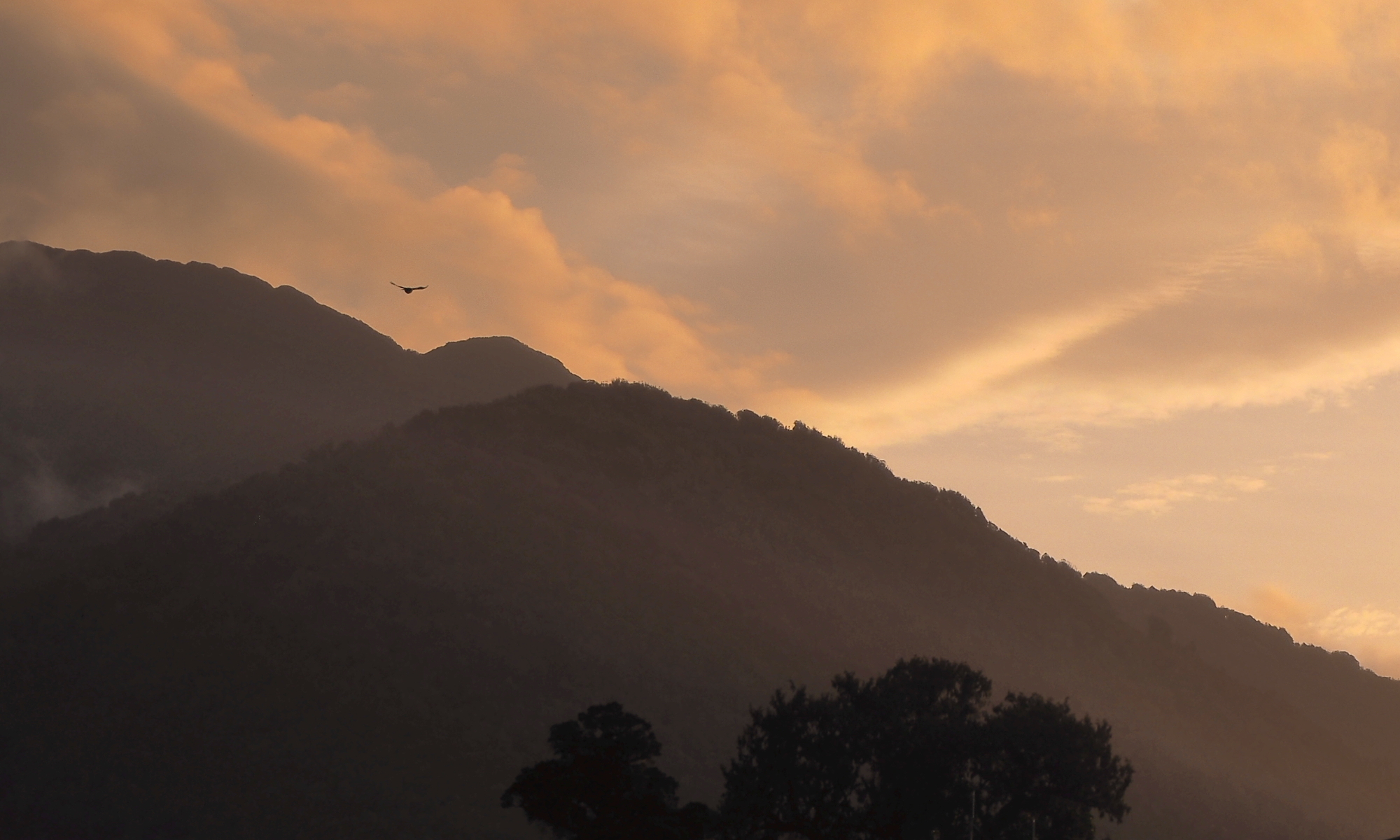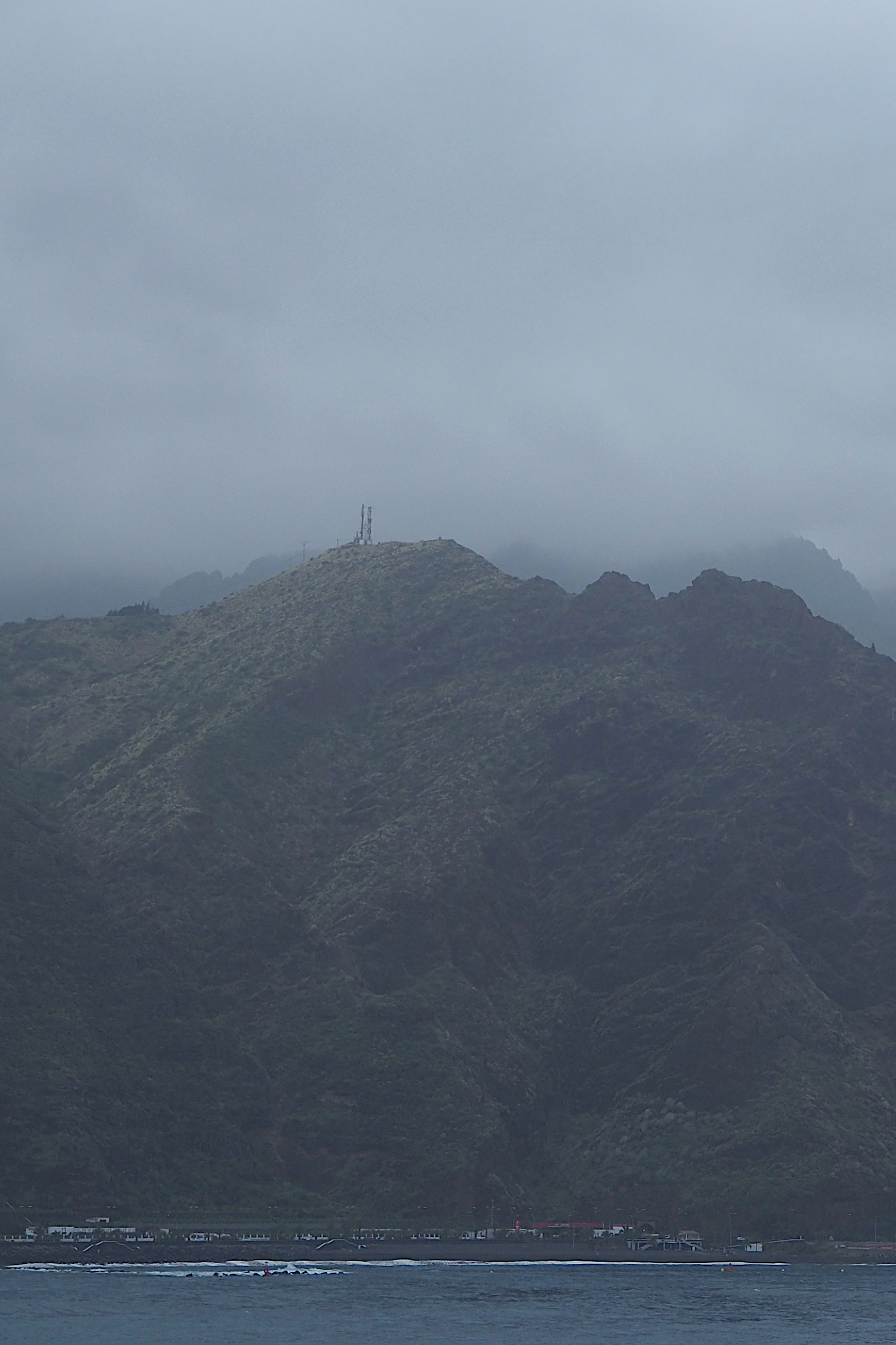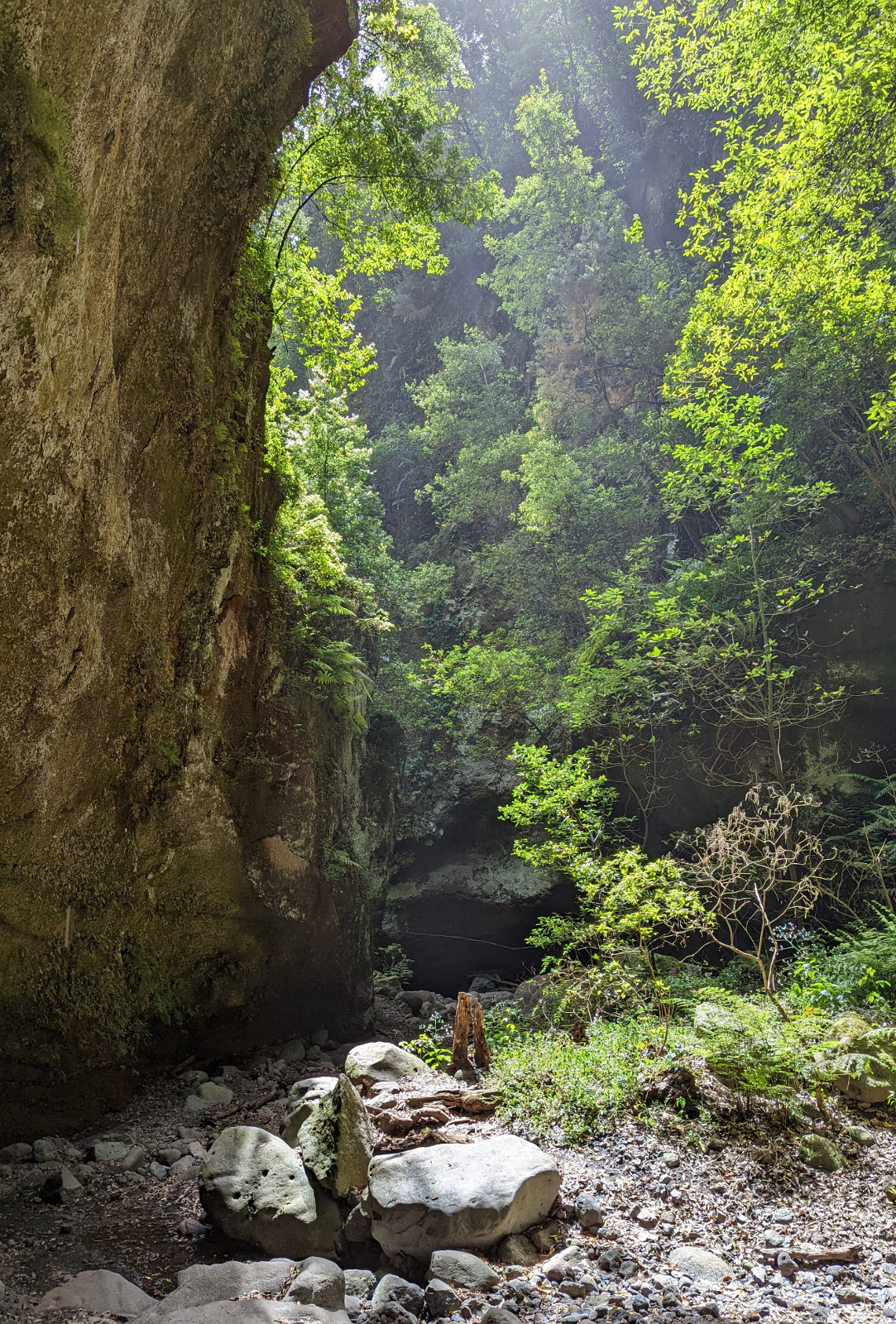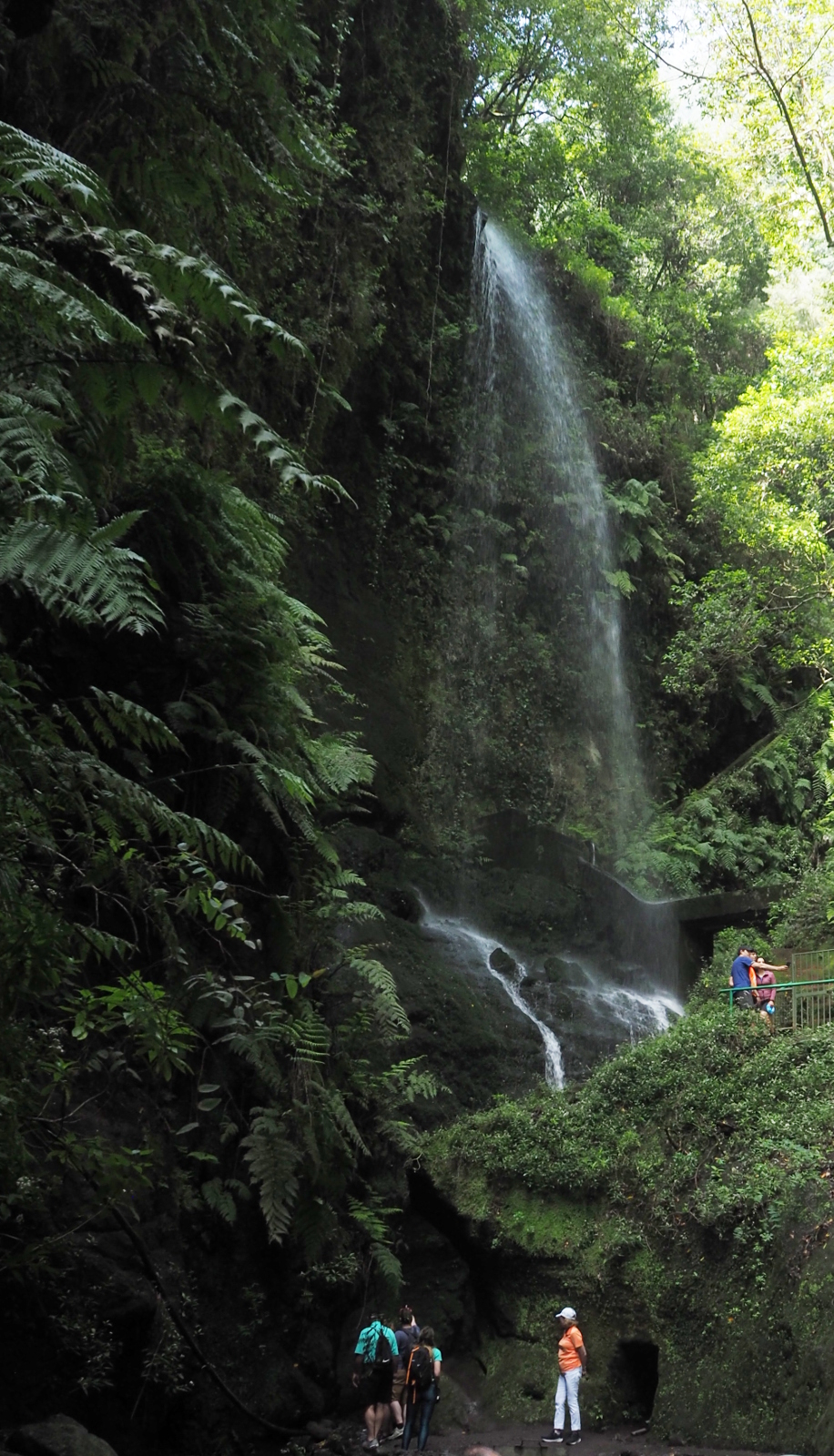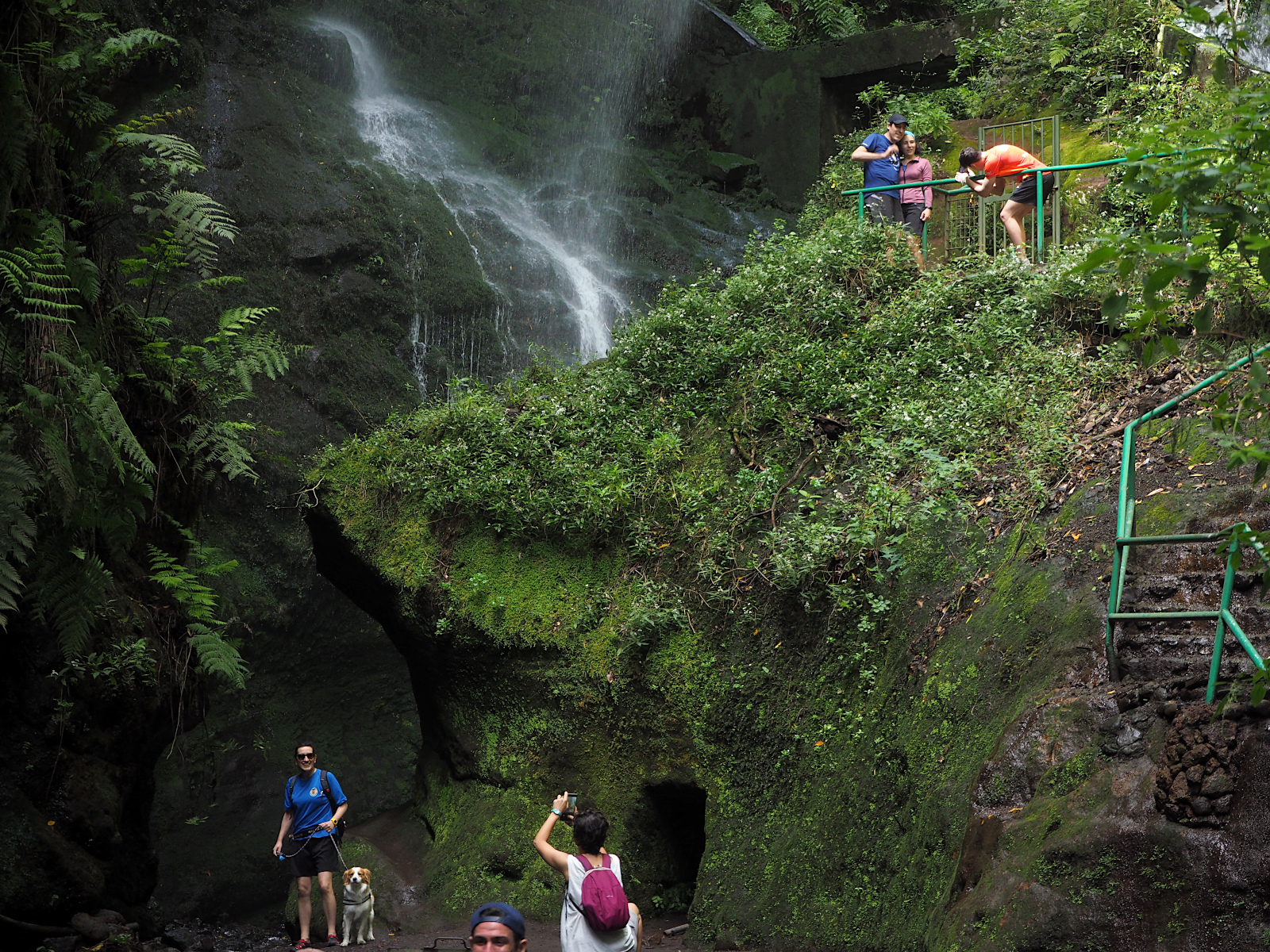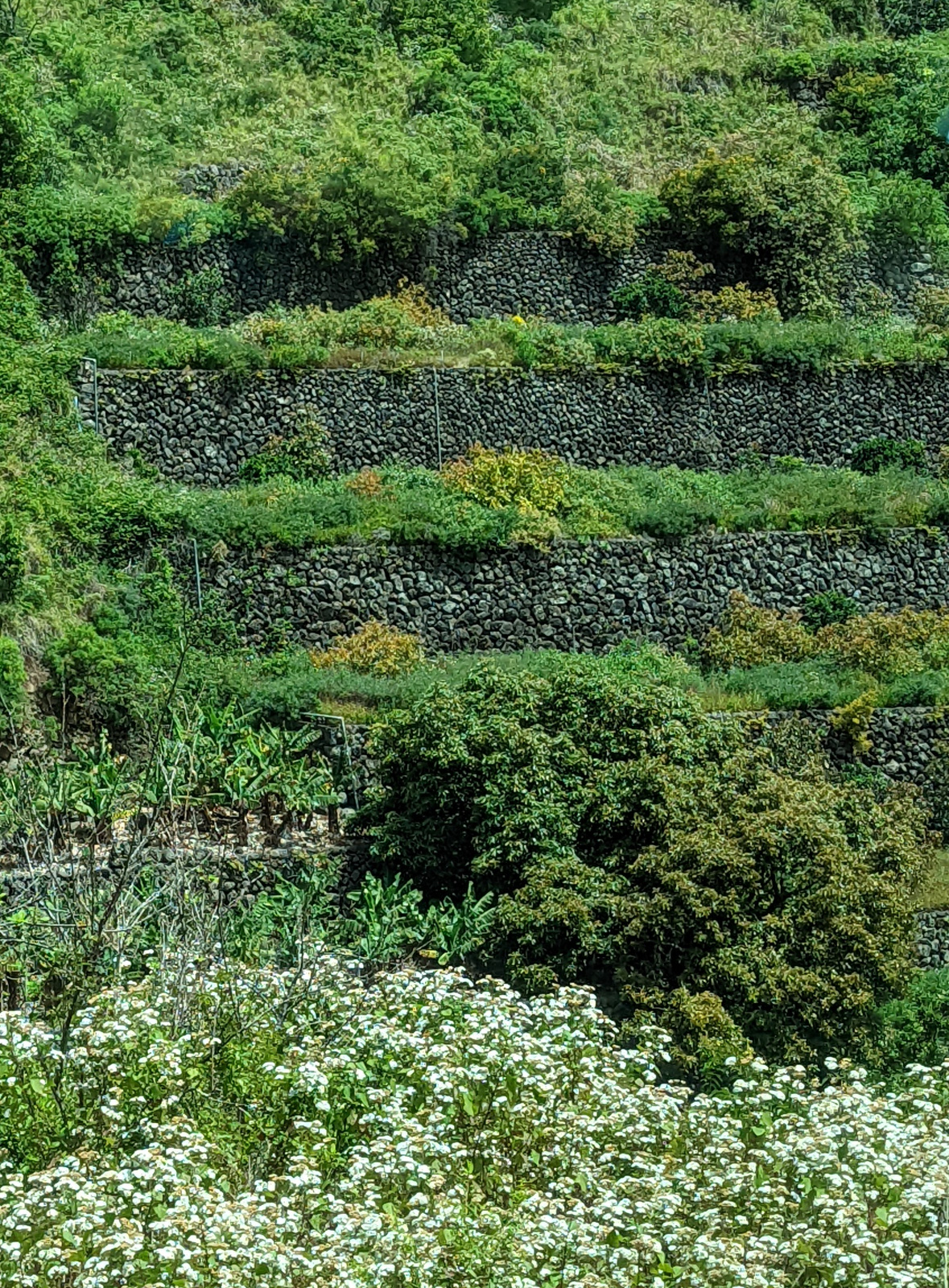La Palma is rugged.
One of the finest astronomical sites on Earth hides serenely above those clouds.
The people of La Palma are proud of their astronomical connection — here’s a signpost from a roadside viewpoint:
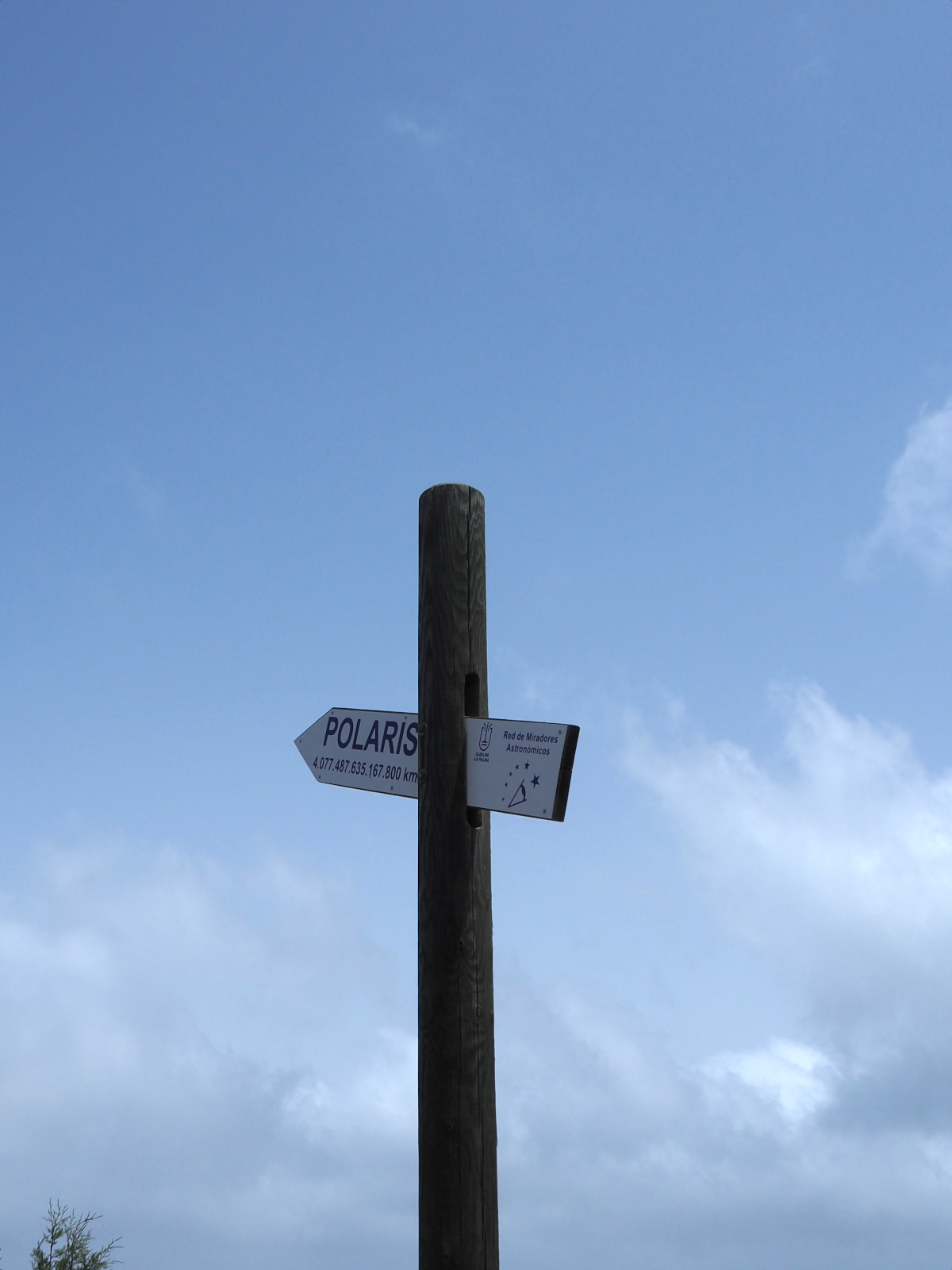
There are about 20 large telescopes on the top of the North Peak.
On September 19, 2021, a major volcanic eruption took place on La Palma. Lava flows wiped out a relatively small part of the island, but our guide told us ash falls covered a large area — “like very fine black flour”. We didn’t see any sign of the ash seven months later. The eruption wasn’t a severe problem for the large telescopes, though a couple of instruments were affected.
La Palma is also very green.
It’s a short hike to the waterfall up ahead:
Note the green metal railings, the rectangular cave mouth, and the concrete structures going back further up the canyon– this is a developed park, not a wilderness area. The canyons are deep and rugged but still modified by human occupation.
This canyon has been developed as a source of fresh water but retains a wild scenic character — a mix of community park, water project, and wilderness area. Further down the trail was an open rectangular water tank, 10′ x 10′ x 6′ deep, with the same damp old concrete.
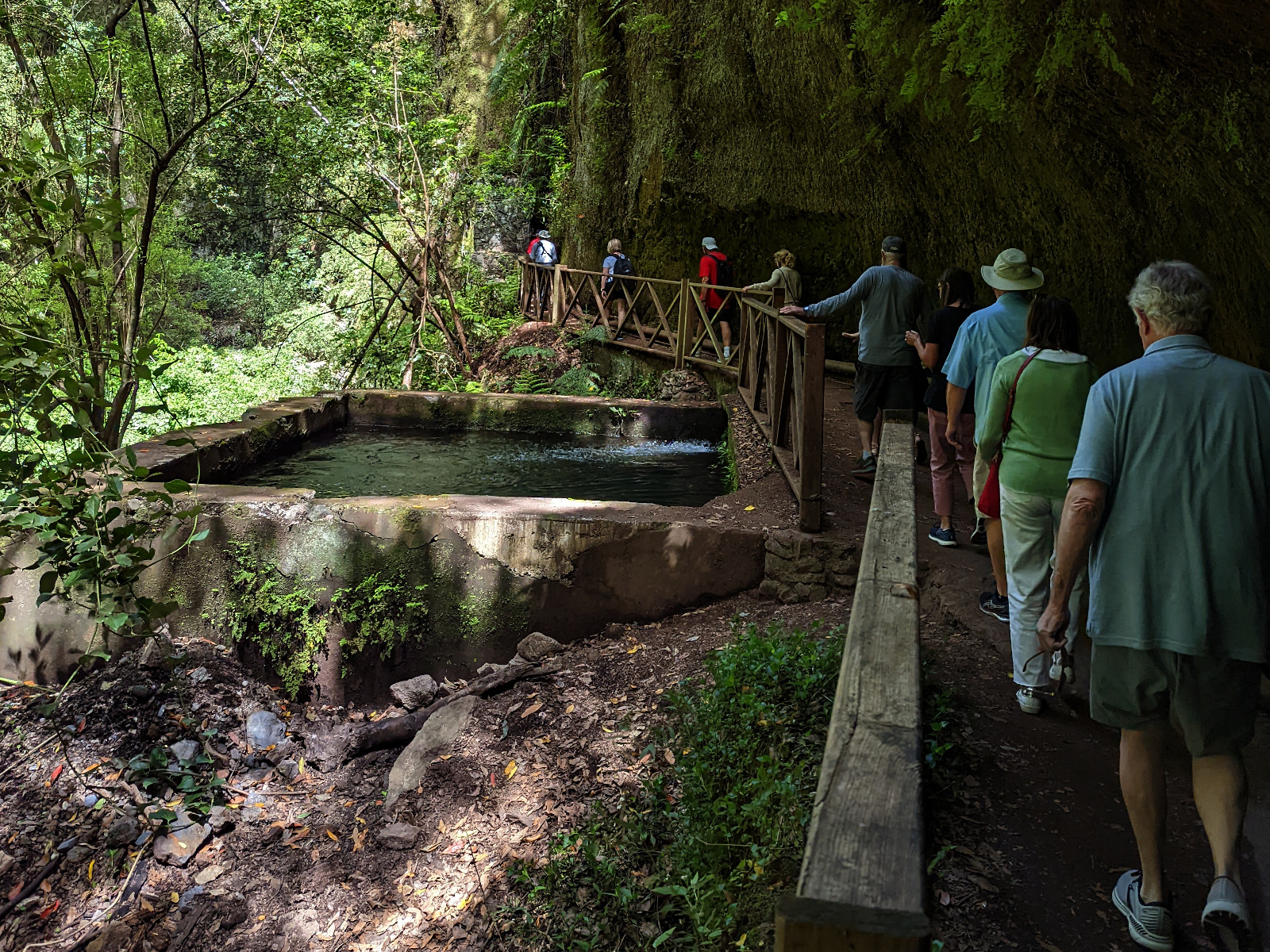
Down the canyon, the almost vertical walls were terraced.
(The picture is misleading. It’s perhaps a hundred feet from the flowers in the foreground to the trees across the canyon; the canyon floor is a hundred feet below.)
A mile or so further, the canyon widens, and the terraces are well-tended:
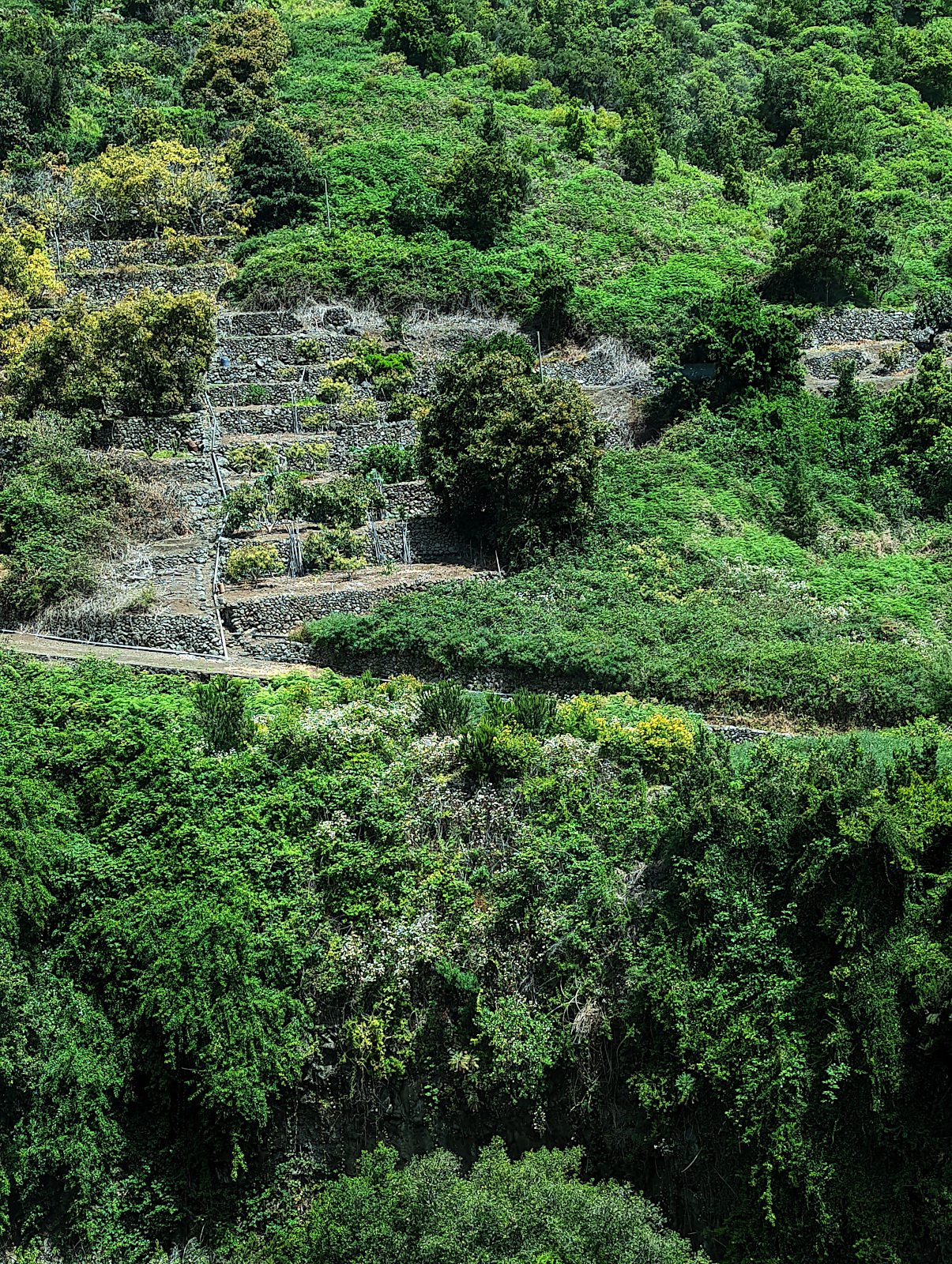 People have been living here for a long time.
People have been living here for a long time.
Well, there was more, but this post is too long already. La Palma was my favorite of our stops. It is unlikely we will ever be there again, but if I had another life, I would like to spend more time there.
